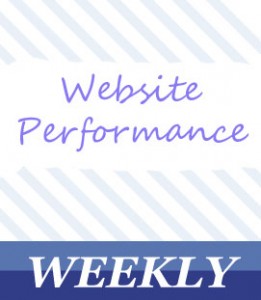by Warren Gaebel
| Jun 19, 2012
 This Week in Website Performance is a weekly feature on the Monitor.Us blog. It summarizes recent web postings about website performance.Due to popular demand, This Week in JavaScript Performance has been expanded and split into a series of weekly articles about website performance. The articles deal with the client side of the performance issue (HTML, DOM, CSS, JavaScript, etc.) and other website performance issues (e.g., PHP, MySql, Apache, HTTP, networking, etc.).
This Week in Website Performance is a weekly feature on the Monitor.Us blog. It summarizes recent web postings about website performance.Due to popular demand, This Week in JavaScript Performance has been expanded and split into a series of weekly articles about website performance. The articles deal with the client side of the performance issue (HTML, DOM, CSS, JavaScript, etc.) and other website performance issues (e.g., PHP, MySql, Apache, HTTP, networking, etc.).
Your Script Just Killed My Site
Author: Steve Souders. Publisher: O’Reilly.
This 9m39s video presentation from O’Reilly’s Fluent Conference is “a cautionary tale of woe and foreboding.” Steve tells us that third-party content (like Facebook’s Like button) can bring a website to its knees if the third party-website fails. In a cruel twist of irony, Facebook proves him right the next day. When it failed, many other sites (those that used Facebook’s third party content) failed right along with it. How right can you be, Steve?
Inlining third party content is more than just a performance issue – it can take your website down completely when one of the third parties goes down. Just remember – load third party content asynchronously after your page is interactive!
Author: Warren Gaebel. Publisher: Monitor.Us.
This article shows how to use a waterfall chart to diagnose performance problems. It tells us what those little horizontal bars and the vertical lines are all about, then describes and deciphers certain observations we may make. Performance issues that may cause those observations are described. It closes by identifying a few of the waterfall chart’s drawbacks.
CSS and the critical path
Author: Stoyan Stefanov.
This article describes the media attribute’s negative impact on rendering and downloading. It argues that CSS is the critical path for performance, more important even than making JavaScript asynchronous. Steve Souders echoes this point in his comment at the bottom.
Async JavaScript callbacks
Author: Stoyan Stefanov.
This article explains that IE9 will break the code that was posted in a previous article. A solution is provided. The previously-posted code (and this correction) show how to download and invoke JavaScript asynchronously. Comments at the bottom show some resistance.
Working with files in JavaScript, Part 5: Blobs
Author: Nicholas C. Zakas.
This is the final part in a series that shows us how to use client-side files. This article shows us how to create blobs. Since File inherits from Blob, everything in this article applies to files, too. Instructions and sample code show us how to use a blob to build a web worker.
The business benefits of good end user experience
Author: Larry Haig. Publisher: Intechnica.
This webinar is part of a series highlighting the importance of the end user experience to the profitability of those who do business online. It presents examples and research to explain why end user experience is so important to retail websites.
The “performance poverty line”: What is it and why does it matter?
Author: Joshua Bixby. Publisher: StrangeLoop.
This article measures the web performance poverty line, the point at which further performance hits don’t matter because you’ve already hit rock bottom. It is found at the 8 second mark. This article also notes that end-users seem to have higher expectations than they did two years ago.
Post Tagged with
 This Week in Website Performance is a weekly feature on the Monitor.Us blog. It summarizes recent web postings about website performance.Due to popular demand, This Week in JavaScript Performance has been expanded and split into a series of weekly articles about website performance. The articles deal with the client side of the performance issue (HTML, DOM, CSS, JavaScript, etc.) and other website performance issues (e.g., PHP, MySql, Apache, HTTP, networking, etc.).
This Week in Website Performance is a weekly feature on the Monitor.Us blog. It summarizes recent web postings about website performance.Due to popular demand, This Week in JavaScript Performance has been expanded and split into a series of weekly articles about website performance. The articles deal with the client side of the performance issue (HTML, DOM, CSS, JavaScript, etc.) and other website performance issues (e.g., PHP, MySql, Apache, HTTP, networking, etc.).









